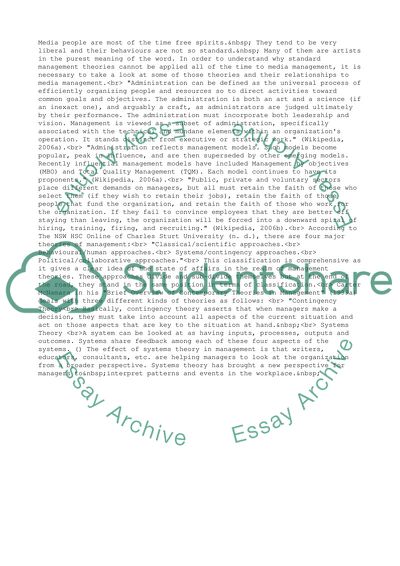Cite this document
(Can Theories of Management Be Applied to Media Manager Coursework, n.d.)
Can Theories of Management Be Applied to Media Manager Coursework. Retrieved from https://studentshare.org/management/1500091-can-theories-of-management-apply-to-media-manager-organisations-and-or-activities-or-are-such-theoretical-applications-redundant
Can Theories of Management Be Applied to Media Manager Coursework. Retrieved from https://studentshare.org/management/1500091-can-theories-of-management-apply-to-media-manager-organisations-and-or-activities-or-are-such-theoretical-applications-redundant
(Can Theories of Management Be Applied to Media Manager Coursework)
Can Theories of Management Be Applied to Media Manager Coursework. https://studentshare.org/management/1500091-can-theories-of-management-apply-to-media-manager-organisations-and-or-activities-or-are-such-theoretical-applications-redundant.
Can Theories of Management Be Applied to Media Manager Coursework. https://studentshare.org/management/1500091-can-theories-of-management-apply-to-media-manager-organisations-and-or-activities-or-are-such-theoretical-applications-redundant.
“Can Theories of Management Be Applied to Media Manager Coursework”, n.d. https://studentshare.org/management/1500091-can-theories-of-management-apply-to-media-manager-organisations-and-or-activities-or-are-such-theoretical-applications-redundant.


